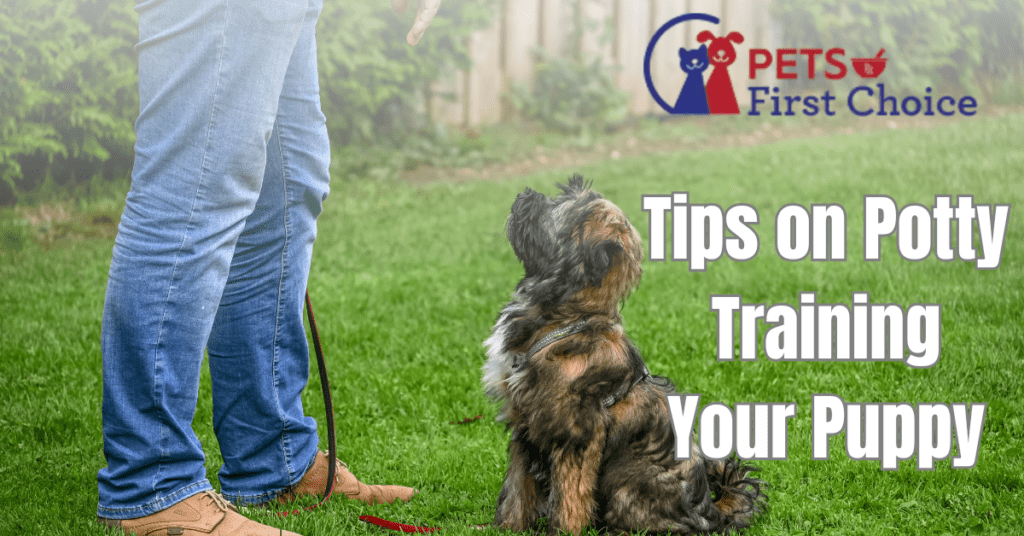Tips on Potty Training Your Puppy

Because every good dog starts with great habits
When we brought home Bella, our tiny golden retriever pup with paws too big for her body and eyes that melted our hearts, we had no idea how much love — and chaos — was about to enter our lives. Between the zoomies, the chewing, and the 2 a.m. whimpers, one thing quickly became clear: it was time to start potty training.
Potty training a puppy isn’t just about keeping your floors clean (although that’s a major bonus). It’s about building trust, creating structure, and helping your furry friend thrive in their new home. Whether you’re wondering how to potty train a puppy or looking for the best puppy potty training schedule, this guide will give you everything you need — and maybe make you smile along the way.
When to Start Potty Training
The best time to begin potty training is between 12–16 weeks of age. By this point, your puppy has enough control over their bladder and bowel movements to start learning where to go. If your puppy is older and hasn’t yet been trained, don’t worry. Dogs can learn at any age with consistency and love.
We started Bella’s potty training the day she came home. That first week? Full of little accidents and big wins — like the first time she rang the bell we hung by the door. We celebrated like she won the lottery.
House Training a Puppy Starts with Routine
House training a puppy requires patience and a predictable rhythm. Dogs are creatures of habit, and establishing a consistent puppy potty training schedule can work wonders.
Here’s what our daily schedule looked like:
- First thing in the morning (yes, before coffee)
- After every meal
- After playtime
- After naps
- Right before bedtime
Every success was met with gentle praise and a treat. Every accident was met with understanding — never punishment. Remember: your puppy isn’t trying to misbehave. They’re learning.
Crate Training a Puppy: Your Secret Weapon
At first, I felt guilty using a crate. But I quickly realized that crate training a puppy isn’t about confinement — it’s about comfort. Dogs instinctively avoid soiling where they sleep, so crates can teach them to “hold it” until it’s time to go outside.
Bella came to love her crate. It became her safe little den. We kept it cozy with soft blankets and placed it in a quiet corner of the living room. Over time, it helped reduce nighttime accidents and made our routine smoother than we ever expected.
Indoor Potty Training for Puppies (When Outside Isn’t an Option)
Sometimes you just can’t make it outside — maybe you live in an apartment, or your tiny pup is still scared of the big world. In those cases, indoor potty training for puppies can be a helpful stepping stone.
Puppy pads, fake grass patches, and designated potty corners can help teach location-based habits. We used a puppy pad in the same corner every time, and Bella quickly learned that “this is where potty happens.” Once she was more comfortable outside, we phased them out.
How Long Does It Take to Potty Train a Puppy?
Every dog is different, but on average, how long does it take to potty train a puppy? Expect about 4–6 months for full house training. Some puppies may catch on in weeks, while others need more time — and that’s okay.
There were weeks when Bella had no accidents at all, followed by a week where she seemed to forget everything. But we kept showing up, being consistent, and celebrating the small wins. That consistency pays off.
How to Potty Train a Dog: Stay Calm, Stay Kind
If you’re searching for how to potty train a dog — especially an older rescue or a more stubborn pup — the same core tips apply: consistency, supervision, and lots of praise. Mistakes are part of the process. But so are those magical moments when it clicks.
There was one rainy morning when Bella sat by the door and let out the tiniest whine. I opened it, and she bolted out, did her business, and ran back in with the biggest grin. I cried. Maybe it was the sleep deprivation, or maybe it was pride. Either way, we had both grown — together.
Final Tips
- Set a timer: Every hour, take them out, even if they don’t go.
- Use a consistent phrase: “Go potty!” helps them associate words with action.
- Don’t scold for accidents: Instead, clean up calmly and redirect them next time.
- Watch for signs: Sniffing, circling, and sudden stillness are often signs they need to go.
- Be patient: Potty training is a marathon, not a sprint.
Bringing a puppy home is a beautiful mix of chaos, joy, and learning. Potty training is one of the first big steps you’ll take together, and while it might feel overwhelming in the moment, you’ll look back and smile at the puddles, the 3 a.m. wake-ups, and the tiny tail wags of accomplishment.
Because one day, you’ll open the door, and your puppy — now a dog — will trot outside like it was always second nature. And you’ll remember just how far you both have come.
👉 Visit Pets First Choice at https://petsfirstchoicerx.com/ to shop reliable products trusted by pet parents nationwide. Because your puppy deserves the best start. 🐶💛
